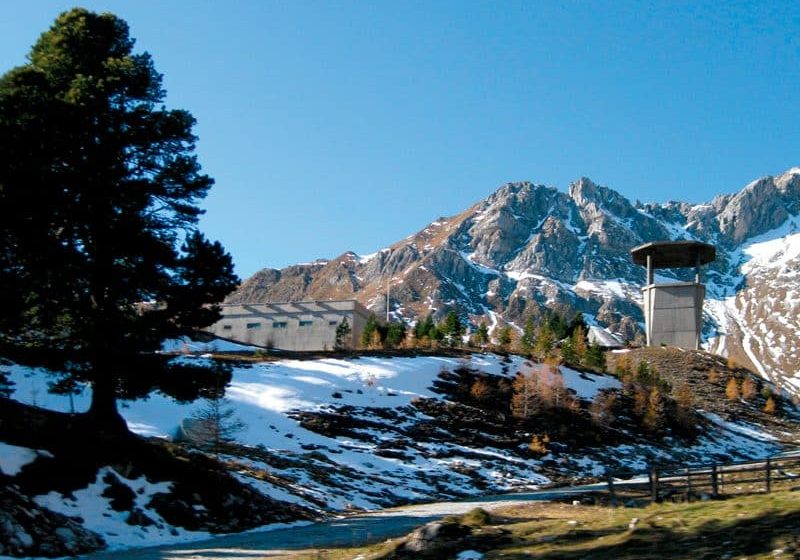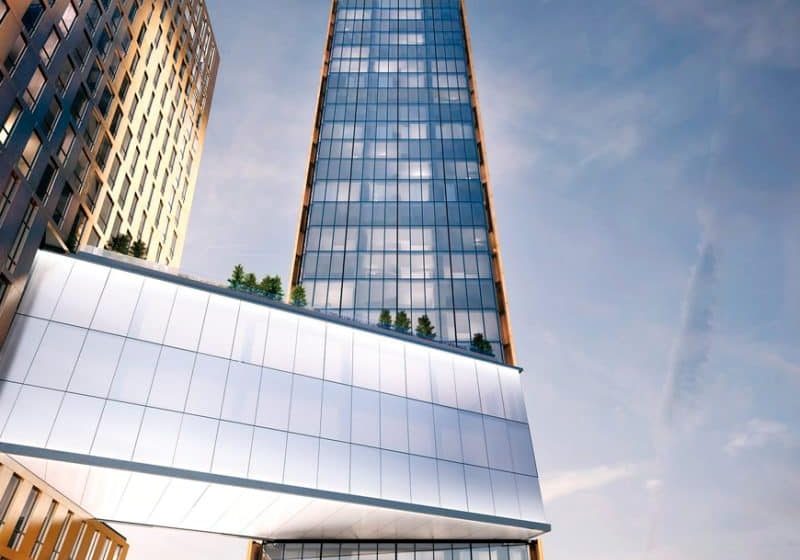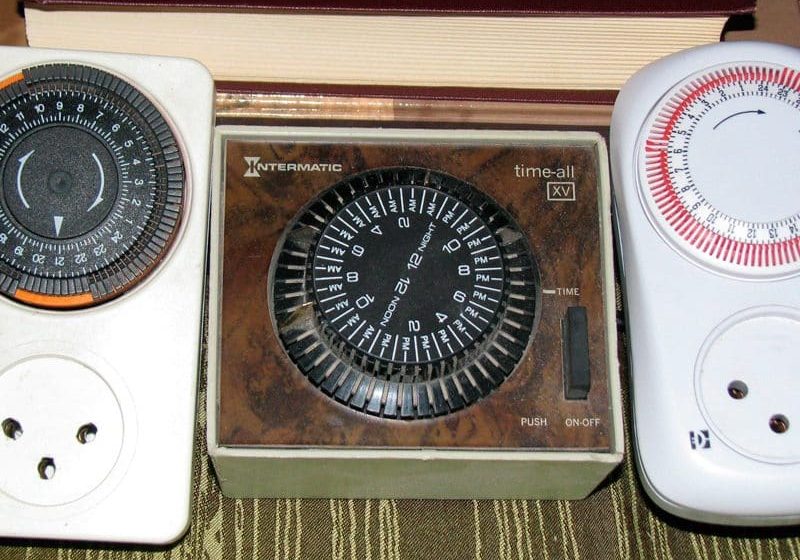Delaware Elevator, Inc.
Jul 1, 2016

Maryland-based company and its sister entities use distinct strategy to thrive.
When Delaware Elevator, Inc. was founded by Paul Meeks in Wilmington, Delaware, in the 1930s, one could not have imagined a manned mission to Mars. Now, such a mission is not only possible, but could happen within the coming decades.[1] Surprisingly, a company within our industry, Delaware Elevator, is playing a critical role in that eventuality. As a Boeing subcontractor, the company is building a high-tech, heavy-duty elevator for the National Aeronautics and Space Administration (NASA) launch complex at Cape Canaveral, Florida (ELEVATOR WORLD, November 2015), which will allow astronauts to board Boeing’s Starliner spacecraft to the International Space Station, a habitable satellite suited for the testing of spacecraft systems and equipment required for missions to the Moon and Mars.[2]
The founding of Delaware Elevator of Wilmington was followed by the founding of Delaware Elevator of Maryland by Paul’s son, Charles, upon his return from World War II in 1946. Building on a philosophy of recruiting top talent and continuing to install new, nonproprietary elevator equipment (different from the majority of independents), the company founded by Charles Meeks has grown exponentially. Its Wilmington predecessor fizzled after Paul Meeks passed away in the 1960s.
In 1985, the Maryland company, based in Salisbury, had seven employees, and today it has in excess of 220 and is actively hiring. States Charles Meeks’ son, Pete Meeks, who took the company over from his father approximately 30 years ago:
“We had our most tremendous growth in 1989 through the 1990s, due to all the new-installation work we were doing. That led to service contracts. My philosophy has always been to stick with new construction, which a lot of independents have gotten out of. We had another growth spurt up until 2008, growing continuously until the downturn. We felt the recession from 2008-2011, but now we’re back probably larger and stronger than we’ve ever been.”
Delaware Elevator is actually numerous interconnected companies: Delaware Elevator, Inc.; Delaware Elevator Services, Inc.; Delaware Elevator Manufacturing Corp.; Delaware Elevator of Florida, Inc.; and Chesapeake Drilling Corp., which specializes in drilling for hydraulic well holes.
In addition to its Salisbury, Maryland, home base, Delaware Elevator has branch offices in Ocean City, Maryland; Wilmington; Metropolitan Washington, D.C./Baltimore; Tidewater/Virginia Beach/Norfolk, Virginia; and Boca Raton and Orlando, Florida. It also has representatives in Tampa and a manufacturing/sales office in Minnesota.
Approximately five years ago, Pete Meeks decided to build a 7,600-sq.-ft., two-story training facility in Salisbury that is still evolving as needs arise. Says Meeks:
“We have been very busy adding different labs and hands-on training capability. We have a hydraulic elevator in our main office building, and we use that from time to time in our training. We also put an MRL cable-traction elevator in the lab in a glass shaftway. During training, we can pick it apart and work with it and adjust it.”
The investment in the training facility has been well worth it, Meeks observes. Delaware requires all its new hires to participate in the four-year elevator-apprentice program from the National Association of Elevator Contractors’ Certified Elevator Technician (CET®) program. While these programs are “second to none,” the onsite training adds another layer of depth to an already specialized education.
At the facility, trainees learn firsthand how to wire push buttons and align guide rails, for example. The state of Maryland and other jurisdictional and private elevator inspectors have attended Delaware Elevator and sub-supplier educational classes at the facility. Hundreds of trainees go through the facility each year, Meeks notes. “We advertise it to our friends and family, so to speak, and make sure others take advantage of it,” he states.
Located near its Salisbury headquarters, Delaware’s manufacturing division supplies many independent and major elevator companies all over North America and the world with equipment that includes:
- Hydraulic, cable-traction and machine-room-less (MRL) systems
- Structural towers
- Preengineered and custom elevator power units
- Freight, industrial and marine elevators
- Residential elevator packages and parts
With deep roots in the Washington, D.C., metropolitan area, Delaware counts governmental agencies among its vast number of repeat clients. The company has both private and government customers in the commercial, residential, industrial and institutional sectors. Meeks elaborates:
“We work with all branches of the military, as well as the General Services Administration, Veterans Administration, NASA and other government agencies. We perform work in hospitals, museums, churches, schools and government buildings. We have successfully completed private and government projects throughout Europe, Asia, the Middle East and South America.”
Meeks says the most challenging aspect of doing business abroad is logistics: shipping, receiving and communications. It is also difficult, he says, to find people who want to travel globally so frequently. “We have a lot of young people who say they want to travel the world, but then when you get down to the nitty gritty of actually leaving, it becomes difficult to man these projects,” he observes.
Some of the notable large projects Delaware has handled include:
- The Smithsonian’s National Air & Space Museum, National Portrait Gallery and National Museum of the American Indian in Washington, D.C.
- Walter Reed National Military Medical Center in Washington, D.C.
- National Wounded Warrior Center in Washington, D.C.
- U.S. Embassy in Beijing
- Princess Royale Oceanfront Resort & Condominiums in Ocean City, Maryland
- U.S. Naval Hospital, Camp Pendleton in San Diego
- U.S. Naval Academy in Annapolis, Maryland (multiple projects)
In addition to providing and maintaining the vertical-transportation systems for notable U.S. and world landmarks in major cities, the company also develops projects and maintains relationships with customers in rural areas. Smaller cities, according to Meeks, are the company’s bread and butter.
It is not the only way to keep the company moving forward, however: Meeks is a familiar face at numerous industry events and always makes it a point to attend tradeshows by such groups as NAEC and the Elevator Conference of New York. It is at these shows that Delaware’s manufacturing division has a chance to showcase what it offers. Company representatives attend regional and local tradeshows, as well.
During the 2015 NAEC conference in San Antonio, Delaware Elevator’s Director of Safety & Education David Smarte observed the company had a strong forecast for the next year in both commercial and residential divisions, but that profit margins were much tighter. He expected improvement this year, a projection verified by Meeks, who stated:
“2016 seems to be a strong year for the entire industry and all of our divisions. However, there is still constant pressure to reduce costs and stay competitive due to the influx of more European-style products and more proprietary and lighter-duty products being marketed and pushed by the majors. In our opinion, both quality and safety have been compromised with some of the newer product designs. In addition, it is becoming harder and harder to be competitive, while providing quality scheduled maintenance, while majors continue to reduce the frequency of scheduled and preventative maintenance in our industry.”
Meeks says the success of his various companies would not be possible without good leadership, including that of Delaware Elevator Vice President Keith Coffin, Chief Financial Officer Barry Hoffman, Human Resources Director Elie Webb, Safety Manager Dave Smarte, Construction Manager Jose Carrasco, Manufacturing Manager Walt Smakulski and Engineering Manager Frank Giampa along with a host of individuals, managers, supervisors and field personnel.
The outlook for Delaware is good, Meeks states, adding:
“Manufacturing is probably one of the fastest-growing areas right now. We build everything from hydraulics to cable traction to MRL systems, as well as a range of parts and components, including full engineering design.”
References
[1] Kramer, Miriam. “Manned Mission to Mars by 2030s Is Really Possible, Experts Say,” Space.com, January 14, 2014.
[2] Wikipedia. “International Space Station,” last accessed April 18, 2016 (en.wikipedia.org/wiki/International_Space_Station).
Get more of Elevator World. Sign up for our free e-newsletter.








